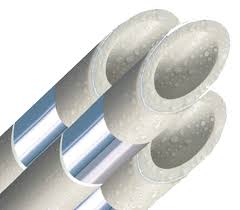Dec . 13, 2024 02:45 Back to list
HDPE Pipe Dimensions and Specifications for Various Applications and Sizes
Understanding HDPE Pipe Sizes and Dimensions
High-Density Polyethylene (HDPE) pipes have become increasingly popular in various industries due to their lightweight, robust nature and resistance to corrosion and chemicals. They are versatile and can be used in several applications, including water supply, sewer systems, and irrigation. Knowing the various sizes and dimensions of HDPE pipes is crucial for engineers, contractors, and planners. This article will provide an overview of HDPE pipe sizes and dimensions, focusing on how these characteristics influence their application.
Common HDPE Pipe Sizes
HDPE pipes are available in a variety of sizes, ranging from small diameter pipes suitable for residential applications to large diameter pipes used in industrial and municipal settings. The sizes are typically categorized based on the nominal pipe size (NPS) and are defined by the standard dimension ratio (SDR), which relates the pipe's wall thickness to its diameter.
1. Nominal Pipe Sizes (NPS) The NPS is a standardized measurement that refers to the diameter of the pipe. It does not directly correlate to the physical diameter, but rather provides a convenient way to describe pipes. For example, a pipe labeled as 2 inches NPS may have an outer diameter of approximately 2.375 inches.
2. Standard Dimension Ratios (SDR) The SDR is a key aspect that defines the wall thickness of the pipe relative to its diameter. This ratio is calculated by dividing the average outer diameter of the pipe by its minimum wall thickness. Common SDR values for HDPE pipes include SDR 11, SDR 13.5, SDR 17, and SDR 21, with smaller SDR numbers indicating thicker walls and higher pressure ratings.
3. Pipe Lengths HDPE pipes are usually available in standard lengths, commonly 20 feet or 40 feet, although custom lengths can also be manufactured based on specific project requirements. The flexibility of HDPE allows for longer lengths, which can reduce the number of joints and fittings needed during installation.
Understanding Dimensions and Tolerances
HDPE pipe dimensions are specified based on the American Society for Testing and Materials (ASTM) and the American National Standards Institute (ANSI) standards. Adhering to these specifications ensures that pipes will perform effectively under expected pressures and conditions.
hdpe pipe sizes and dimensions products

1. Diameter While the NPS gives a nominal size, the actual dimensions can vary slightly due to manufacturing tolerances. It is essential to consider these tolerances when planning pipe layouts, especially in sensitive applications where precise fittings and connections are required.
2. Wall Thickness The wall thickness is crucial for determining the pipe’s strength and pressure-bearing capacity. Thicker walls can withstand higher pressures, making them suitable for crucial applications such as potable water supply.
3. Physical Properties Besides diameter and wall thickness, other physical properties—such as flexibility and impact resistance—are intrinsic to HDPE pipes. These qualities allow for ease of installation in environments where traditional materials might fail.
Applications of HDPE Pipes
The choice of size and specification greatly impacts the application of HDPE pipes. Common uses include
- Water Distribution HDPE pipes are preferred for potable water systems due to their resistance to chemicals and biological growth. - Sewage and Stormwater Systems Their durability and flexibility make HDPE pipes ideal for handling various sewage and wastewater applications without fear of cracking or breaking. - Irrigation Systems Agriculture frequently utilizes HDPE pipes in irrigation due to their resistance to corrosion and ability to withstand the pressure of water flow. - Cable Protection HDPE conduits are often used for protecting electrical and communication cables, offering a robust solution against environmental damage.
Conclusion
Understanding HDPE pipe sizes and dimensions is essential for selecting appropriate materials for any project. The versatility of HDPE allows it to be tailored to various applications while maintaining high performance. By considering nominal pipe sizes, standard dimension ratios, and the unique requirements of your project, you can confidently choose the right HDPE pipes for your needs. Whether in construction, agriculture, or other industries, the importance of proper sizing cannot be overstated, as it directly affects the efficiency, safety, and durability of the systems involved.
-
High-Quality PVC Borehole Pipes Durable & Versatile Pipe Solutions
NewsJul.08,2025
-
High-Quality PVC Perforated Pipes for Efficient Drainage Leading Manufacturers & Factories
NewsJul.08,2025
-
High-Quality PVC Borehole Pipes Durable Pipe Solutions by Leading Manufacturer
NewsJul.08,2025
-
High-Quality PVC Borehole Pipes Reliable PVC Pipe Manufacturer Solutions
NewsJul.07,2025
-
High-Quality UPVC Drain Pipes Durable HDPE & Drain Pipe Solutions
NewsJul.07,2025
-
High-Quality Conduit Pipes & HDPE Conduit Fittings Manufacturer Reliable Factory Supply
NewsJul.06,2025

